We’ll explore more of the brass by looking at the trombone. The name is a combination of two ideas: tromba from the Italian for trumpet and -one, which is the Italian suffix for something large, so a trombone is a large trumpet. But it has taken the idea of the trumpet as a sounding tube and made it a sounding tube that can change length. Its telescopic slide is unique to the instrument – no other symphonic instrument has that capability.
The original instrument before it took its Italian name was the sackbut, or sagbut, or shakbush, with a French derivative from sacquer (to remove violently) and bouter (to shove), describing the actions of the player. The earliest descriptions of the sackbut come from the 15th century.
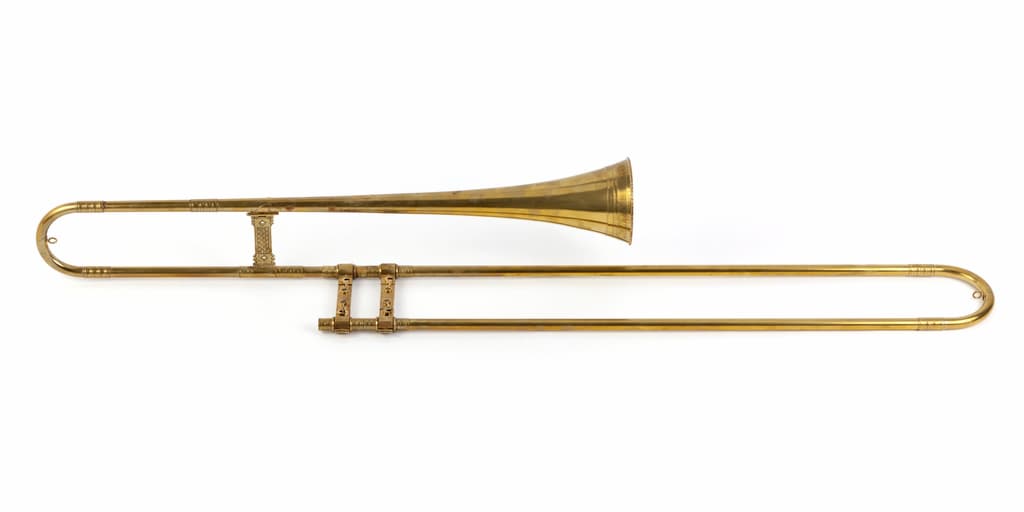
A Renaissance-era tenor sackbut (replica by Frank Tomes, London)
The sound of the sackbut is much softer than the modern trombone and, in many cases, was used for its non-speaking vocal sound.
Marc’ Antonio Ziani: Alma redemptoris mater (Hiroya Aoki, countertenor; Yosuke Kurihara and Kentaro Wada, sackbuts; Yuka Niitsuma, organ)
The earliest depiction of the sackbut / trombone in art appears in Filippino Lippi’s fresco The Assumption of the Virgin in the Carafa Chapel of the Santa Maria sopra Minerva in Rome. Completed in 1493, the fresco shows music-making angels, including one on the sackbut on the left side.
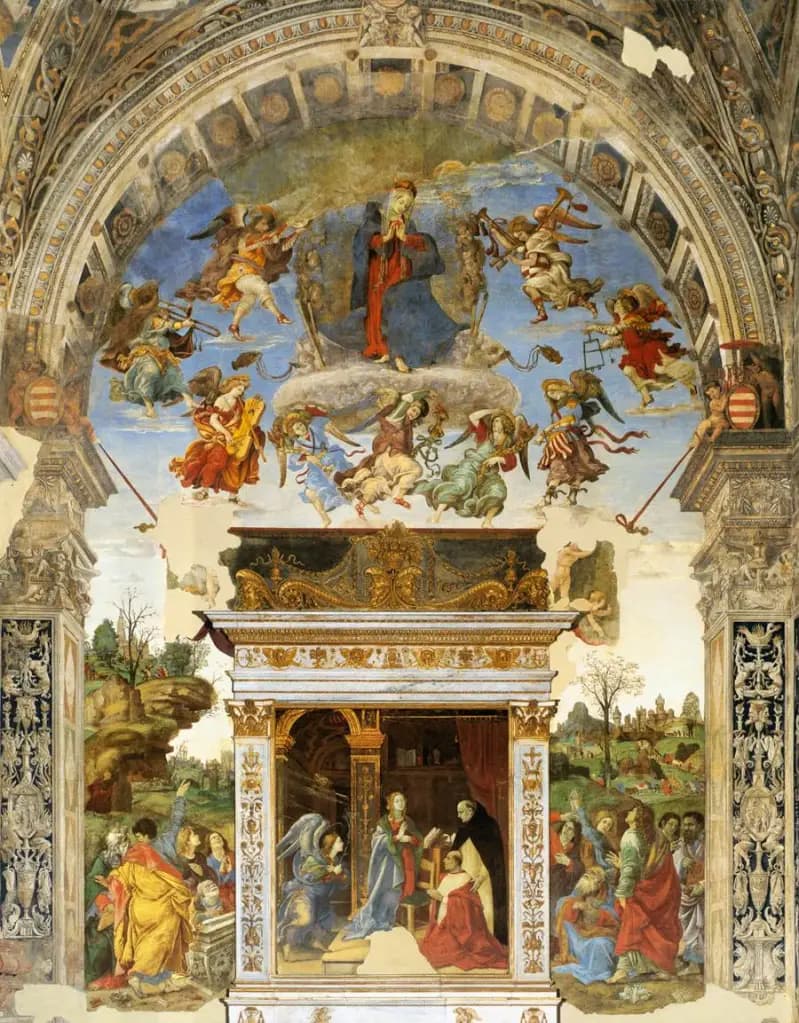
Filippino Lippi: The Assumption of the Virgin (Rome: Carafa Chapel of the Santa Maria sopra Minerva)
The Renaissance sackbut was smaller than the current trombone, with its greatest difference in the bell: the modern bell is more conical and flared.
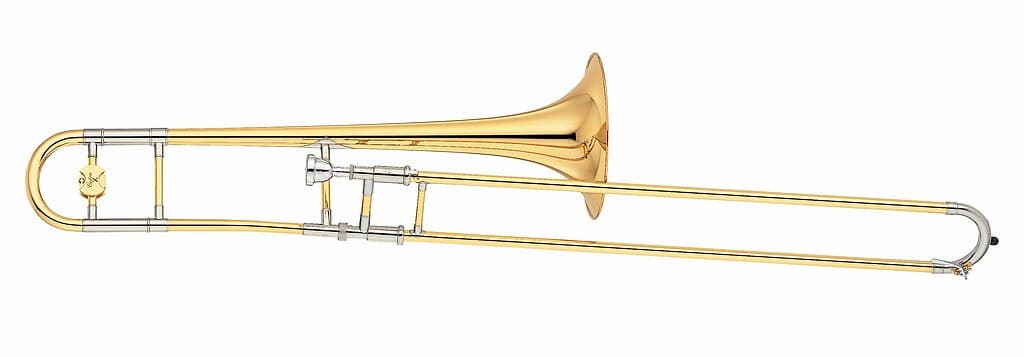
A modern trombone (Yamaha)
The two instruments shown above are tenor trombones, the most common instrument. The sackbut came in different sizes, and the modern trombone comes in up to six different sizes, from piccolo to contrabass.
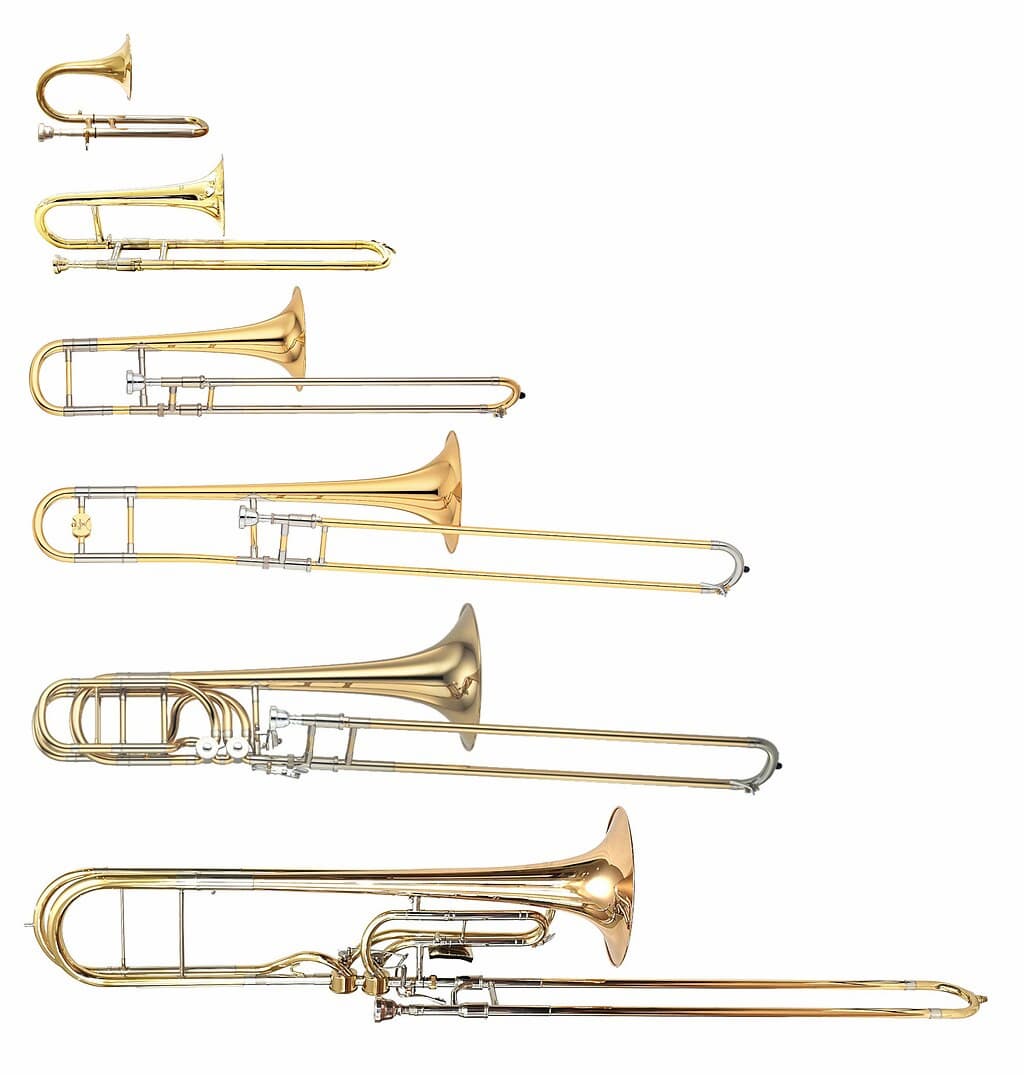
The Trombone family (from the top: piccolo, soprano, also, tenor, bass, and contrabass
The piccolo trombone was invented in the 1950s as a novelty instrument and is generally played by trumpeters.
The soprano trombone was developed in the 17th century but is rarely used. Again, because of its size, very much like a Bb trumpet, it tends to be played by trumpeters.
The alto trombone was used, starting in the 16th century, in church music to support the alto voices. They have been called for in the symphonies of Beethoven, Brahms, and Schumann, but they were largely supplanted by tenor trombones.
The tenor trombone, as mentioned above, is the standard trombone size.
Bass trombones can be seen in modern orchestras as an instrument between the tenor trombones and the tuba. It started to be used in orchestras from the mid–19th century.
The contrabass trombone is a rarity, first commissioned by Richard Wagner for the Ring cycle in the 1870s. It is not a regular orchestra member but has found a modern life in film and video game soundtracks.
There are other varieties of trombones, such as valve trombones, and the Italian cimbasso, called for in Verdi and Puccini operas, but we will ignore those!
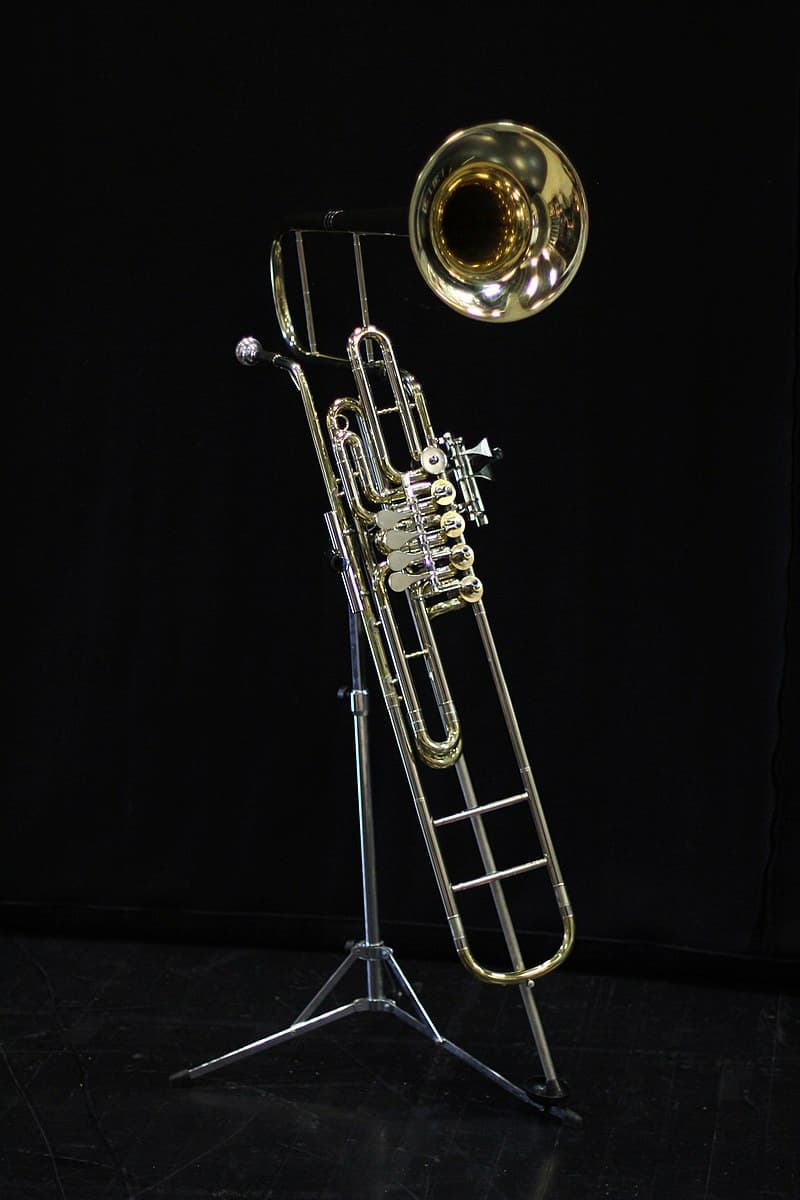
Modern Italian Cimbasso
In music, the trombone’s primary position as a support instrument means that, unlike the violin and piano, there is very little classical music for it – nothing from Mozart, Haydn, Beethoven, Schumann, or Schubert. Most classical music for the trombone comes from transcriptions from other instruments. Bach’s Cello Suites are some of the best music in this category.
J.S. Bach: Cello Suite No. 2 in D Minor, BWV 1008 (arr. H. Avitsur and R. Cuckson for trombone) – II. Allemande (Haim Avitsur, trombone)
Leaving the earlier centuries behind, we can concentrate on the 19th century forward for true trombone music.
German composer Ferdinand David (1810–1873) was a virtuoso violinist and long-term friend of Felix Mendelssohn; giving the premiere of his Violin Concerto in E minor. As leader of the Leipzig Gewandhaus Orchestra (under Mendelssohn), David was commissioned by trombonist Carl Traugott Queisser for a new concerto and his Trombone Concertino, Op. 4, was the result. It was given its premiere in 1837 with Queisser as soloist and Mendelssohn as conductor of the Gewandhaus Orchestra.
Ferdinand David: Trombone Concertino in E-Flat Major, Op. 4 – I. Allegro maestoso (Jurgen Heinel, trombone; Berlin Staatskapelle; Heinz Fricke, cond.)
We don’t expect Rimsky-Korsakov to have a trombone concerto, but his 1877 work fits the bill. The opening is filled with fanfare, and the work continues with many military-sounding passages.
Nikolai Rimsky-Korsakov: Trombone Concerto in B-Flat Major (Michele Lomuto, trombone; Banda Musicale Aeronautica Militare; Patrizio Esposito, cond.)
One of the most popular modern trombone pieces is by French composer Eugene Bozza. His Ballade, composed in 1944, combines lyrical and dance-like sections with an extended cadenza. It, along with Paul Hindemith’s Trombone Sonata of 1941, is regarded as one of the most demanding works written for the instrument.
Eugène Bozza: Ballade, Op. 62 (Mayumi Shimizu, trombone; François Killian, piano)
Paul Hindemith: Trombone Sonata – IV. Allegro moderato maestoso (Mark Davidson, trombone; Viktor Valkov, piano)
Italian composer Luciano Berio’s Sequenza V (1966) for trombone is a modern and very demanding work for trombone solo. The player is challenged with producing percussion-like sounds with the use of a plunger mute, using his singing voice either inhaling or exhaling at the same time as he actually plays, and asking the player to do multiple effects at once, such as flutter-tonguing, playing a glissando, and making a change of slide on the same tone.
Luciano Berio: Sequenza V (Christian Lindberg, trombone; Roland Pöntinen, piano)
Croatian composer Stjepan Sūlek wrote his Trombone Sonata in 1973 and gave it the nickname of ‘Vox Gabrieli’. It received its premiere at the International Trombone Festival in 1973 and became an instant classic.
Stjepan Sulek: Trombone Sonata, “Vox Gabrieli” (Michael Buchanan, trombone; Kasia Wieczorek, piano)
Because of the slide on the trombone, many non-trombone pieces are really fun to hear on this instrument, including The Flight of the Bumble-bee.
Nikolai Rimsky-Korsakov: The Tale of Tsar Saltan: Flight of the Bumble-bee (Christian Lindberg, trombone; Roland Pöntinen, piano)
Its place in the popular musical world was cemented in Meredith Willson’s magnificent closing of The Music Man with the change from out-of-tune amateurs to a real marching band with Seventy-Six Trombones.
76 Trombones (Full Scene) – The Music Man (1962)
From its beginnings as a vocal accompaniment to becoming a core member of the brass family in the orchestra, the trombone has adapted to a variety of roles. It can stand out as a solo instrument as much as it can provide support in the background.
For more of the best in classical music, sign up for our E-Newsletter


